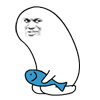说明:本文来自微信民众号:果壳(ID: Guokr42),作者:莱德,编纂:Edan,雪竹,头图来自:东方IC
周周都是星期一,几时先到星期五。非常困难把身材从被窝拖到工位上,还要倒数9小时放工。唉,先点开个网页看看……咦,天黑了?恰饭!
人类在摸鱼上显示出绝后的连合。据统计,上班不摸鱼的员工在环球一万三千多家企业中占比均匀不超13%,中国连均匀数的一半都没到达,只要6%。摸鱼给环球企业带来了每年近一万亿美圆的丧失。
摸鱼老是被简朴归为损坏消费的怠工行动。真的是如许吗?
我们上班摸鱼,真的是由于我们愈来愈懒了吗?
谜底是否认的。
环球摸鱼图鉴
此时此刻,在环球各地的职场上有若干人在摸鱼,又是怎样摸的呢?

先来看一下北半球。北美是收集生长最早也最进步的区域,在相称长一段时期内都是摸鱼界的一哥。观察显现,只管北美近一半的公司把一些热点网站屏障了,照样有均匀多达89%的员工介入了摸鱼运动,52%~57%的员工天天摸鱼最少1小时。
 北美各摸鱼项目比例一览 | 作者统计,数据泉源见文末
北美各摸鱼项目比例一览 | 作者统计,数据泉源见文末
再来看一看欧洲。
作为工业革命的发源地,英国曾是近代史上摸鱼比例最低的国度没有之一。但现现在英国人的勤恳水平在38个经济强国中仅排在第25名,每周均匀42个工时,近一半的事情时刻还在摸鱼。
74%的德国人认可介入过摸鱼,均匀天天1~2小时,大多数在午休时刻,以是以严谨勤恳著称的德国人透露显示自身只是在一样平常歇息。法国则很风趣, 一小群人冒死事情,一群人完整不事情,另有一群人处于事情与歇工的叠加态,实际摸鱼率比调研要高许多。
 西欧各摸鱼项目比例一览 | 作者统计,数据泉源见文末
西欧各摸鱼项目比例一览 | 作者统计,数据泉源见文末
瑞典人有近一个月的年假,不管父母都有近500天的产假,大局部人每周事情40小时且从不加班。天真时刻事情制是企业常态,但瑞典人仍然会花一小时吃早餐、喝咖啡谈天、刷脸书,为正式的完工预热。再加上午休,一天下来最少要用掉两小时摸鱼。
 北欧各摸鱼项目比例一览|作者统计,数据泉源见文末
北欧各摸鱼项目比例一览|作者统计,数据泉源见文末
亚洲的收集起步较晚,基础显现了和西欧相似的摸鱼进化趋向,特别是网聊及购物增进极快。70%-92%的人介入摸鱼,8小时制一样平常摸鱼1~2小时,9小时摸3小时,12小时以上的最少6小时。
 日本各摸鱼项目比例 | 作者统计数据泉源见文末
日本各摸鱼项目比例 | 作者统计数据泉源见文末
已知摸鱼最长最完整(完整不干活)的记载是14年,声誉属于一位德国公务员;最受迎接的摸鱼体式格局是阅读网页,检察私家邮件和交际网站;最不受迎接的是打游戏。而最讨人厌的是成人文娱——只管它是本世纪初事情时段互联网70%的流量泉源。
经由过程研讨各个国度的摸鱼行动,社会学家发明,摸鱼主要分两类:表达不满的主动摸鱼与非自愿性怠工的被迫摸鱼。
主动摸鱼
主动摸鱼的主要缘由有二:一是对缺少平正的发作,二是对无代价事情的扫兴。
先从平正提及。
企业的平正显示在对员工个别、头脑、效果、失利、有形与无形劳动代价的珍爱与尊敬,显示在商业运动的各个方面。
社会学家总结出了平正的三个要素:
1. 顺序公理,指平正推断怎样分派;
2. 分派公理,指老实实行分派;
3. 互动公理,指平正处置惩罚人际干系(打球赢了上司第二天由于左脚先踏进公司被解雇的几率)。
在这三个目标上显示低劣的企业偏向以不公以至鸡贼的体式格局压榨员工,员工初级以至恶性的事情显示也越频仍,致使消费率进一步下落——加重盘剥——熟练工去职——从新练习新员工——本钱上升,恶性循环直至破产。
好比说团队协作中几个员工一同做题案,有些人能够完整不干活,但跟指导干系好,以是绩效也算他们的。剩下的敬业员工则须要更加地事情,却得不到分外的待遇。久而久之,底本高产的人也会由于不满而最先摸鱼,以至去职。
再来讲更让人无望的事情的意义。
实际与象牙塔是两个天下。接受了 5~8年的高等教育,却只能忙于在无足轻重的集会上做秀的ppt。这些岗亭与薪水或许婚配,但与教育水平是严峻错位的。
 北美摸鱼党给出的摸鱼来由,个中很大一局部以为义务太无趣,和自身无足轻重 | 作者统计数据泉源见文末
北美摸鱼党给出的摸鱼来由,个中很大一局部以为义务太无趣,和自身无足轻重 | 作者统计数据泉源见文末
更糟的是几年后,发明“事情”已是一场装模作样的烦琐演出。印象盖过结果,招摇盖过干事,解决问题和制作代价的初志被边缘化。既没有能知足抱负的义务,也没有显示代价的奇迹,只要在岗亭上无聊地捱过一天又一天。当这灾难以至没法被平正报答,就会引发损坏性的摸鱼行动,企业内讧和衰落也就此最先。
“若是必须用一句话归纳综合我16年的事情经历,那就是`伪装增添代价`。升迁的重点在于让自身看上去有代价,至于你是否是窝囊废,那基础不主要。如果你真的给公司制作了代价,那你的职业规划恐怕是走了弯路。由于只要那些预备在公司呆一生的底层员工才会真的玩命干活。”
————斯科特·亚当斯(Scott Raymond Adams),美国有名漫画家与企业家,曾任太平洋贝尔(现AT&T)高层
被迫摸鱼——不克不及不摸的鱼
平正的缺失和事情的无代价感都邑影响我们摸鱼的志愿,而有些鱼岂论你愿不愿意,都得摸。这完整是某些事情流程或义务分派致使的余暇窗口——我们叫它被迫摸鱼,即非自愿性怠工。
假定你的事情是盯着一堆显现器,每隔一阵按几个按钮并抄表,然后放工前交给上级。这份工虽没有中心熔毁的风险,但少按按钮或抄错表了也会出毛病。明显你的老板既不克不及够强行制作贫苦,也不太能够让你脱离一会去帮他洗车。剩下的挑选只要在工位上摸鱼,好比写科幻小说。

看起来在事情,实在已睡着了 | 辛普森一家
另有些高度细化的工种,如局部金融业者、公务员两三个小时就可以完成一整天的事情,剩下的时刻只好摸鱼,特别当主动做分外的营业毫无收益以至违法时。换句话说,这群人只是在本来就无事可做时顺其自然,既非心有不满,也非主动偷懒。
再如设计师和谋划,或许是信息时代最天真而最受流水线头脑危害的工种之一。思索会被看成偷懒,做的快又会被重复返工,创作一大堆备选计划只由于不克不及闲着,因而痛快摸鱼或偷偷做其他项目。这些高产者常被迫演戏,因而就和针锋相对的低产者配合组成了摸鱼的大多数。
摸鱼≠怠工
信息时代的摸鱼与事情之间的界线已非常隐约,很难把摸鱼直接放在事情的对峙面上。现在许多 “摸鱼”运动,特别在高技术密集型家当和须要制作力想象力的行当,已是事情的一局部,好比应用收集积聚素材、与火伴交换思索、坐在办公桌前等灵感大驾光临等等。
 北欧的数据显现,17.71%的摸鱼实际上是在用收集辅佐事情 | 作者统计,数据泉源见文末
北欧的数据显现,17.71%的摸鱼实际上是在用收集辅佐事情 | 作者统计,数据泉源见文末
与此同时,不管交际、上网、处置惩罚私事、购物,都增添了这些人的小我知足感,并能够对职场压力有肯定的减缓作用,最少它与消费力下落无关。
瑞典人热衷于经由过程小规模社会试验发明进步社会团体幸福感的体式格局。早在本世纪初,一些企业就将事情制收缩为天天六小时,另外一项为期两年的六小时制社会试验也在近来闭幕,员工的满意度,生机大幅进步,告假率下落,摸鱼率则有升有降,整体消费力增进远超过用工本钱。
之以是产能悉数进步,恰是由于一些企业没法削减一定存在的空置时刻,收缩的工时提升了员工的幸福感,消费力反而更高;另有些企业则不克不及不将一样的事情量紧缩至6小时——鸡血状况的极限,消费力和压力同步上升。
相对的,妄想经由过程加班来进步消费力才是不切实际。
愈来愈多互联网公司把996事情制当作标配,愈来愈多顺序员到场抵抗996的运动中。他们喊出的标语是“事情 996,抱病 ICU”。
“996”指的是天天早上9点到岗,晚上9点放工,一周事情6天。在这类轨制下,每周事情时刻最低72小时。
为何说996不合理?除涉嫌违法外,一个主要缘由是加班越多,摸鱼越多。
加班会挤压就寝时刻。而人体没法匹敌自身的生理极限,疲劳的时刻不得已,只能靠摸鱼来徐徐。据统计,以一天7小时就寝为准,每多睡一小时=少摸3分钟。每少睡一小时=多摸最少9分钟。
我们从小遭到的练习,最长也不外3小时就会歇息,这也是多数人注意力的极限,加上两小时职场杂事,两小时摸鱼,8小时之外的工时满是无效功。想要9以至12小时延续鸡血,歉仄只要戏精做得到。
常常加班的企业很轻易堕入恶性循环:加班多-睡得少-摸鱼多-事变多-更加班-睡更少-事更多(删库跑路)。

图片泉源:网友克己
末了,形成摸鱼的缘由固然不止上文中提到的几点——好笑的KPI考评,犹豫不决的决议计划,短视逐利的资源,歹意的营销宣扬,固化的构造构造等等。这些缺点自身作为因,才显现出摸鱼的果。打压摸鱼,就像靠止疼片止疼,却绝不克不及治愈病灶一样。而希图用临时加班和裁人填补,无异于饮鸠止渴。
关爱摸鱼党,人人有责。
参考文献:
[1] Ahmadi, H., Bagheri, F., Ebrahimi, S. A., Rokni, M. A. N., & Kahreh, M. S. (2011). Deviant work behavior: Explaining relationship between organizational justice and cyber‑loafing as a deviant work behavior. American Journal of Scientific Research, 24, 103–116.
[2] Ancona, D. G., & Chong, C. L. (1996). Entrainment: Pace, cycle, and rhythm in organizational behavior. Research in Organizational Behavior, 18
[3] Bandura, A. (1997). Self-efficacy: The exercise of control. New York, NY: W. H. Freeman.
[4] Barnes, C. M., Schaubroeck, J., Huth, M., & Ghumman, S. (2011). Lack of sleep and unethical conduct. Organizational Behavior and Human Decision Processes, 115
[5] Baumeister, R. F., & Heatherton, T. F. (1996). Self-regulation failure: An overview. Psychological Inquiry, 7
[6] BBC, No internet for Singapore public servants. BBC, 8 June 2016.
[7] *Betts, T. K., Setterstrom, A. J., Pearson, J. M., & Totty, S. (2014). Explaining cyberloafing through a theoretical integration of theory of interpersonal behavior and theory of organizational justice. Journal of Organizational and End User Computing, 26(4), 23–42.
[8] Black, E., Light, J., Black, N. P., & Thompson, L. (2013). Online social network use by health care providers in a high traffic patient care environment. Journal of Medical Internet Research, 15(5)
[9] Brock, M. E., Martin, L. E., & Buckley, M. R. (2013). Time theft in organizations: The development of the Time Banditry Questionnaire. International Journal of Selection and Assessment, 21(3)
[10] Brittany K. Mercado, Casey Giordano, Stephan Dilchert, (2017) "A meta-analytic investigation of cyberloafing", Career Development International, Vol. 22
[11] Coren, S. (1996). Daylight savings time and traffic accidents. New England Journal of Medicine, 334,
[12] Çınar, O., & Karcıoğlu, F. (2015). The Relationship between cyber loafing and organizational citizenship behavior: A survey study in Erzurum/Turkey. Procedia ‑ Social and Behavioral Sciences, 207
[13] Dalal, R. S. (2005). A meta‑analysis of the relationship between organizational citizenship behavior and counterproductive work behavior. Journal of Applied Psychology, 90(6)
[14] Downing, M. (2005). Spring forward: The annual madness of daylight saving time. Berkeley, CA: Counterpoint.
[15] Ethics Resource Center. (2012). National business ethics survey of social networkers: New risks and opportunities at work
[16] Empty Labor: Idleness and Workplace Resistance, R. Paulsen Cambridge University Press, Cambridge (2014)
[17] Fallows, D., 2005. How women and men use the Internet. PEW Internet and American Life Project, December, 1–45.
[18] *Gorsuch, J. L. (2014). The effects of control and work/family centrality on the personal use of work computers. Cleveland State University
[19] Goode, W.J., 1960. A theory of role strain. American Sociological Review, 25
[20] Hofstede, G. 1980. Culture’s consequences: International differences in work-related values. Beverly Hills, CA: Sage Publications.
[21] Hofstede, G. 2001. Culture’s consequences: Comparing values, behaviors, institutions and organizations across nations. 2nd Edition, Thousand Oaks, CA: Sage Publications.
[22] Hofstede, G., G. Hofstede, and M. Minkov. (2010). Cultures and organizations: Software of the mind intercultural cooperation and its importance for survival. 3rd ed. New York, NY: McGraw-Hill.
[23] Hofstede Insights. (2017). The Hofstede Center. https://www.hofstede-insights.com. (accessed November 16, 2017).
[24] Hallett, T., (2002). Christmas cyberloafing cost UK businesses £154 million
[25] Hollinger, R.C. and Clark, J.P., (1983). Deterrence in the workplace: perceived certainty, perceived severity and employee theft. Social Forces, 62 (2)
[26] Hursh, S. R., Redmond, D. P., Johnson, M. L., Thorne, D. R., Belenky, G., Balkin, T. J., . . .Eddy, D. C. (2004). Fatigue models for applied research in warfighting. Aviation, Space, and Environmental Medicine, 75,
[27] IDA, 2008. Annual Survey on Infocomm Usage by Enterprise for 2007. Infocomm Development Authority of Singapore.
[28] Jackson, L.A., et al., 2001. Gender and the Internet: women communicating and men searching. Sex Roles, 44
[29] Jia, H., Jia, R., & Karau, S. (2013). Cyberloafing and personality: The impact of the Big Five traits and workplace situational factors. Journal of Leadership & Organizational Studies, 20(3)
[30] Joseph C. Ugrin et al.(2018). An Examination of the Relationship between Culture and Cyberloafing Using the Hofstede Model. Journal of Internet Commerce, Volume 17
[31] König, C. J., & de la Guardia, M. E. C. (2014). Exploring the positive side of personal internet use at work: Does it help in managing the border between work and nonwork? Computers in Human Behavior, 30
[32] Lara Khansa et al.(2017). To Cyberloaf or Not to Cyberloaf: The Impact of the Announcement of Formal Organizational Controls. Journal of Management Information Systems. Volume 34
[33] Lim, V. K. G., & Chen, D. J. Q. (2012). Cyberloafing at the workplace: Gain or drain on work? Behaviour & Information Technology, 31(4)
[34] Lim, V. K. G., & Teo, T. S. H. (2005). Prevalence, perceived seriousness, justification and regulation of cyberloafing in Singapore: An exploratory study. Information & Management, 42(8)
[35] Monk, T. H., Buysee, D. J., Billy, B. D., & DeGrazia, J. M. (2004). Using nine 2-h delays to achieve a 6- h advance disrupts sleep, alertness, and circadian rhythm. Aviation, Space, & Environmental Medicine, 75
[36] Niaei, M., Peidaei, M. M., & Nasiripour, A. A. (2014). The relation between staff cyberloafing and organizational commitment in organization of environmental protection. Kuwait Chapter of the Arabian Journal of Business and Management Review, 3(7)
[37] Society for Human Resource Management. (2011). Social media in the workplace
[38] Salary.com. (2014). Wasting time at work
[39] Smale, A. (2016, April 13). Dispatcher playing with cellphone is faulted in German train crash. The New York Times
[40] Smith, A., and E. Hume. 2005. Linking culture and ethics: A comparison of accountants’ ethical belief systems in the individualism/collectivism and power distance contexts. Journal of Business Ethics 62:209–20
[41] Swaidan, Z. 2012. Culture and consumer ethics. Journal of Business Ethics 108:201–12.
[42] Shultz, K. S., Wang, M., & Olson, D. A. (2010). Role overload and underload in relation to occupational stress and health. Stress and Health, 26(2)
[43] Spector, P. E., Fox, S., Penney, L. M., Bruursema, K., Goh, A., & Kessler, S. (2006). The dimensionality of counterproductivity: Are all counterproductive behaviors created equal? Journal of Vocational Behavior, 68(3)
[44] Spector, P. E., & Fox, S. (2010). Counterproductive work behavior and organisational citizenship behavior: Are they opposite forms of active behavior? Applied Psychology, 59(1)
[45] Teo, T.S.H. and Lim, V.K.G., 2000. Gender differences in Internet usage and task preferences. Behaviour and Information Technology, 19 (4)
[46] The Straits Times, 2006. Cyberloafers’ use up 20 working days yearly: study. The Straits Times, 1st February.
[47] The Straits Times, 2008. Instant messages outpace SMS texting. The Straits Times, 7th June.
[48] van Hooff, M. L. M., & van Hooft, E. A. J. (2014). Boredom at work: Proximal and distal consequences of affective work-related boredom. Journal of Occupational Health Psychology, 19(3)
[49] van Hooff, M. L. M., & van Hooft, E. A. J. (2016). Work-related boredom and depressed mood from a daily perspective: The moderating roles of work centrality and need satisfaction. Work & Stress, 30(3)
[50] van Wyk, S. M., de Beer, L. T., Pienaar, J., & Schaufeli, W. B. (2016). The psychometric properties of a workplace boredom scale (DUBS) within the South African context. SA Journal of Industrial Psychology, 42
[51] Vivien K.G. Lim et al.(2012). Cyberloafing at the workplace: gain or drain on work? Behaviour & Information Technology Volume 31,2012
[52] WAGNER, David T.; BARNES, Christopher M.; LIM, Vivien K. G.; and FERRIS, D. Lance. (2012)
[53] Lost sleep and cyberloafing: Evidence from the laboratory and a Daylight Saving Time quasi-experiment. Journal of Applied Psychology, 2012
[54] Watson, D., Clark, L.A., and Tellgen, A., (1988). Development and validation of brief measures of positive and negative affect: the PANAS scale. Journal of Personality and Social Psychology, 54, 1064–1070.
[55] Weiser, E.B.,(2000). Gender differences in Internet use pattern and Internet application preferences: a two sample comparison. CyberPsychology and Behaviour, 3 (2), 167–178.
[56] Wagner, D. T., Barnes, C. M., Lim, V. K. G., & Ferris, D. L. (2012). Lost sleep and cyberloafing: Evidence from the laboratory and a daylight saving time quasiexperiment. Journal of Applied Psychology, 97(5)
[57] yougov.co.uk,A seven hour working day is 'most productive', 14 Oct. 2015
数据泉源:
1. Eurostat 欧盟统计 https://ec.europa.eu/eurostat/
2. Gallup环球职场情况申报https://www.gallup.com/home.aspx
3. https://www.mysammy.com
4. http://www.hrmorning.com
*文章为作者自力看法,不代表虎嗅网态度
本文由 果壳© 受权 虎嗅网 宣布,并经虎嗅网编纂。转载此文请于文首标明作者姓名,连结文章完整性(包孕虎嗅注及其他作者身份信息),并请附上出处(虎嗅网)及本页链接。原文链接:https://www.huxiu.com/article/294625.html
未依照范例转载者,虎嗅保存追查响应义务的权益
将来眼前,你我还都是孩子,还不去下载 虎嗅App 猛嗅立异!,返回网站首页
关注我们:请关注一下我们的微信公众号:扫描二维码
 ,公众号:aiboke112
,公众号:aiboke112版权声明:本文为原创文章,版权归 所有,欢迎分享本文,转载请保留出处!





评论已关闭!